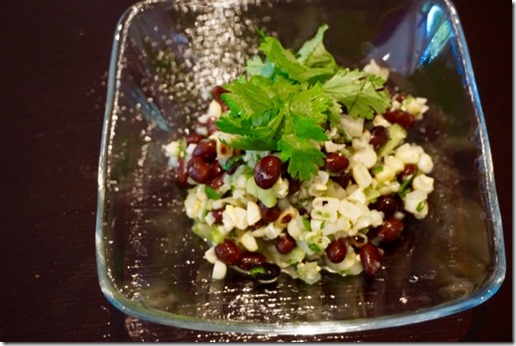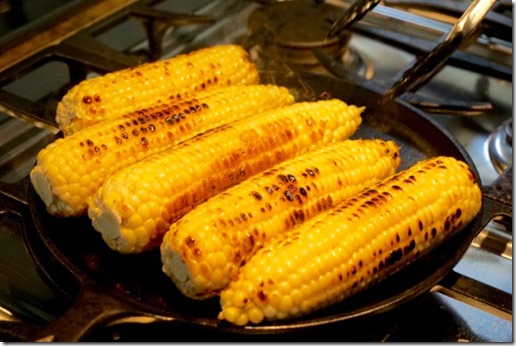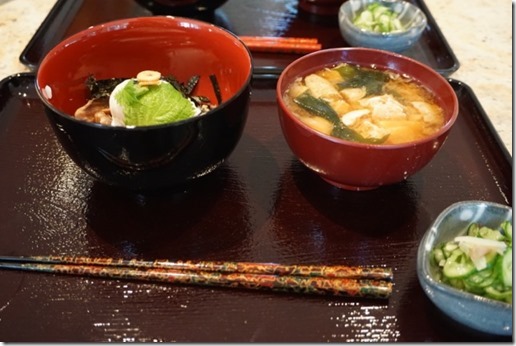One of the times I made cold simmered vegetables which we like to have on hand in the summer, I included renkon レンコン or lotus root and kon-nyaku コンニャク or devil's tongue. Both were too much to use in the vegetable dish so I made a small dish of kinpira of renkon and konnyaku. The konnyaku was par boiled and I cut it into small long strips. The renkon was just sliced thinly. I put a small amount of vegetable oil with a splash of dark toasted sesame oil in a frying pan on medium heat and added flakes of dried red pepper. Then I added the renkon and konyaku and sautéed them until the oil coated the surface. I then braised by adding mirin and soy sauce. I braised it until only a small amount of liquid remained in the pan. I added white roasted sesame seeds and cut the fire. This is a variation of kinpira but the contrast of texture between renkon (firm and crunchy) and the konnyaku (soft but elastic) was perfect.
Since I had pork loin barbecued in my Weber grill (trussed, seasoned with salt, black pepper and finely chopped fresh rosemary and hot smoked/barbecued to the internal temperature of 145F) and also my potato salad, I made rolls. This combination cannot go wrong.
Since I prepared (boiled) harcoverts over the weekend, I just dressed it with sesame paste/mayo dressing (Mayonnaise, white sesame paste, and soy sauce) to complete my threesome.
These were good starters for the evening.






























